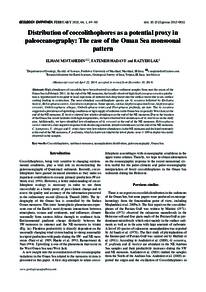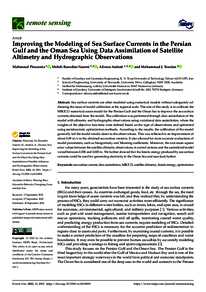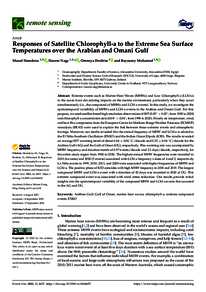وثيقة
Distribution of coccolithophores as a potential proxy in paleoceanography: the case of the Oman Sea monsoonal pattern.
المعرف
DOI: 10.1515/geoca-2015-0011
المساهمون
Hadavi, Fatemeh., مؤلف
Lak, Razyeh., مؤلف
الناشر
Ferdowsi University of Mashhad.
ميلادي
2015-02
اللغة
الأنجليزية
الملخص الإنجليزي
High abundances of coccoliths have been observed in surface sediment samples from near the coasts of the Oman Sea in February 2011. At the end of the NE monsoon, the locally observed high Gephyrocapsa oceanica production is hypothesized to respond to local injections of nutrient-rich deep water into the surface water due to sea-surface cooling leading to convection. The most abundant coccolithophore species are G. oceanica followed by Emiliania huxleyi, Helicosphaera carteri, Calcidiscus leptoporus. Some species, such as Gephyrocapsa muellerae, Gephyrocapsa ericsonii, Umbilicosphaera sibogae, Umbellosphaera tenuis and Florisphaera profunda, are rare. The G. oceanica suggested a prevalence of upwelling conditions or high supply of nutrients in the Oman Sea (especially West Jask) at the end of the NE monsoon. E. huxleyi showed low relative abundances at the end of the NE monsoon. Due to the location of the Oman Sea in low latitudes with high temperatures, we have observed low abundances of G. muellerae in the study area. Additionally, we have identified low abundances of G. ericsonii at the end of the NE monsoon. Helicosphaera carteri showed a clear negative response with decreasing amounts (relative abundances) at the end of the NE monsoon. C. leptoporus, U. sibogae and U. tenuis have very low relative abundances in the NE monsoon and declined extremely at the end of the NE monsoon. F. profunda, which is known to inhabit the lower photic zone (<100 m depht) was rarely observed in the samples.
المجموعة
ISSN
1335-0552
URL المصدر
قالب العنصر
مقالات الدوريات



